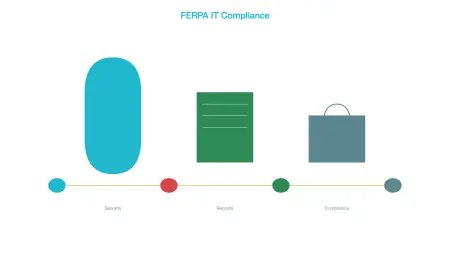Natural Language Processing: Turning Human Language into Machine Intelligence
Natural Language Processing (NLP) is the science and engineering that allows machines to read, interpret, and derive meaning from human communication.
In a world flooded with data, the ability for machines to comprehend human language is no longer a futuristic concept—it’s the backbone of next-gen digital transformation. Natural Language Processing (NLP) is the science and engineering that allows machines to read, interpret, and derive meaning from human communication.
From automated customer support in the USA to AI-driven translation services powering global commerce, NLP is shaping how we interact with technology. And when paired with Machine Learning for Language, its potential only expands.
What is Natural Language Processing?
Natural Language Processing bridges the gap between human communication and machine understanding. It combines computational linguistics, computer science, and machine learning to process and analyze large amounts of natural language data.
Core tasks include:
-
Text classification
-
Sentiment analysis
-
Named entity recognition

-
Language translation
-
Summarization
-
Speech recognition
At its heart, NLP empowers machines to “understand” and “respond” in ways that feel natural to us, whether it’s through a voice assistant, chatbot, or enterprise search engine.
NLP and the Rise of Machine Learning for Language
As AI systems evolve, Machine Learning for Language has become the engine behind accurate and scalable NLP systems. Instead of relying on manually-coded rules, machine learning models can be trained on massive datasets to learn patterns, semantics, and structure.
There are two main learning paradigms:
-
Supervised learning: Models are trained on labeled data to predict outcomes (e.g., classifying spam vs. non-spam emails).
-
Unsupervised learning: Models identify patterns in unstructured data (e.g., clustering customer queries by topic).
With transfer learning and large pre-trained models like GPT, BERT, and Claude, the ability to fine-tune these systems for industry-specific use cases has exploded. This is where the Top LLM vs generative AI distinction becomes critical.
Top LLM vs Generative AI – What’s the Difference?
Knowing whether to deploy a Top LLM vs a generative AI solution depends on your use case, risk tolerance, and operational priorities:
Top LLMs (Large Language Models)
-
Focused on high-quality, text-based tasks like summarization, Q&A, and dialogue generation.
-
Trained on structured and curated datasets.
-
Prioritize output accuracy, guardrails, and contextual depth.
Generative AI
-
A broader set of capabilities, including image generation, audio synthesis, and creative ideation.
-
Often optimized for variety and creativity over precision.
-
It may be less predictable in outputs, requiring tighter human oversight.
Businesses must weigh whether accuracy and domain specificity (Top LLM) outweigh the flexibility and content diversity (generative AI), especially in regulated industries.
Business Use Cases of NLP in Action
Here’s how companies across sectors are putting NLP to work:
Customer Support & Chatbots
-
NLP chatbots resolve common issues, saving time for human agents.
-
Real-time sentiment analysis helps prioritize dissatisfied customers.
Market Intelligence & Brand Monitoring
-
NLP tools scrape and analyze social media, forums, and news sources.
-
Detect emerging trends, PR crises, or product feedback.
Healthcare Data Processing
-
NLP systems extract information from unstructured medical notes.
-
Support diagnosis and treatment planning without manual chart review.
Legal & Compliance
-
Automate contract analysis, flag inconsistencies, or compliance gaps.
-
Reduce time spent on manual document review and improve accuracy.
NLP and Machine Learning for Language in the Enterprise
To fully leverage NLP, companies should integrate Machine Learning for Language into their core systems. Key strategies include:
-
Custom model training: Use industry-specific language data to fine-tune models.
-
APIs and cloud platforms: Connect with NLP services via platforms like Azure OpenAI, AWS Comprehend, or Google Cloud NLP.
-
Human oversight: Ensure outputs are validated by subject-matter experts, especially in sensitive domains like finance or health.
When implemented properly, these models provide enterprise-grade performance with the flexibility to adapt as your business evolves.
Future Trends in NLP and LLM Adoption
Looking ahead, expect a growing emphasis on:
-
Explainability: Understanding why models generate certain outputs.
-
Multilingual NLP: Supporting global operations with accurate, culturally-aware language processing.
-
Personalized AI agents: Tailoring responses to user history, tone, and preferences.
-
Hybrid architectures: Combining Top LLM vs generative AI components for optimal performance across varied tasks.
Conclusion
From improving user experiences to automating back-end workflows, Natural Language Processing is at the center of AI's next big leap. Businesses in the USA and around the world are already seeing the value of pairing NLP with Machine Learning for Language to unlock efficiency, insight, and innovation.
Whether you need surgical precision (Top LLM) or creative flexibility (generative AI), choosing the right mix is essential. Understanding the strengths of each model ensures your AI investments deliver measurable ROI.
Call to Action
Curious how NLP and AI can drive real business value? Let’s talk. Our team helps you evaluate your options—Top LLM vs generative AI—and implement tailored NLP solutions that deliver results. Book a consultation today and turn your data into your most powerful asset.
What's Your Reaction?
 Like
0
Like
0
 Dislike
0
Dislike
0
 Love
0
Love
0
 Funny
0
Funny
0
 Angry
0
Angry
0
 Sad
0
Sad
0
 Wow
0
Wow
0

















































